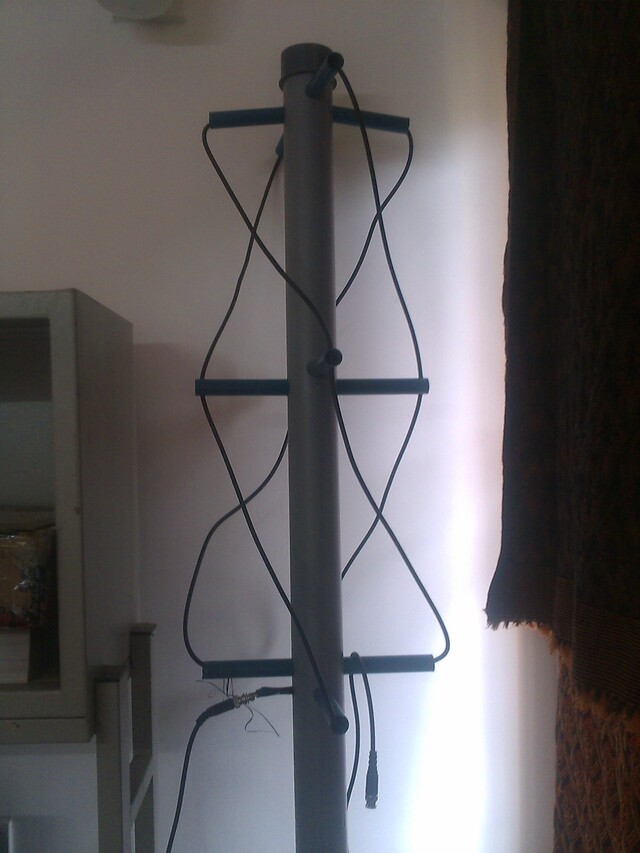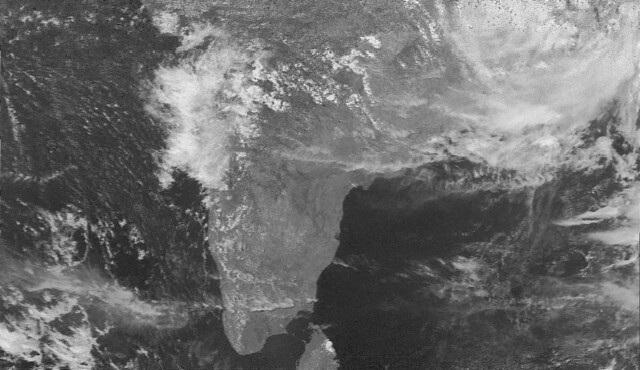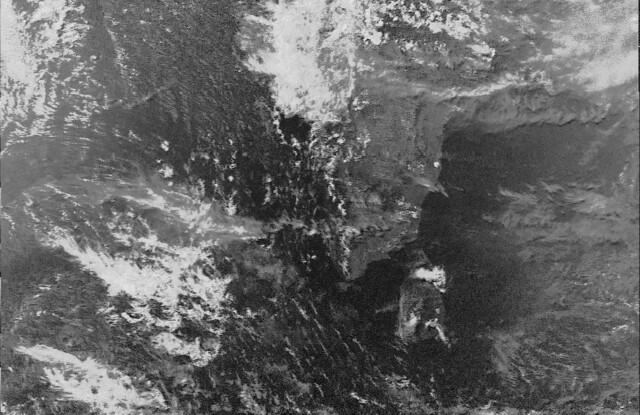The Quadrifilar Helix and APT Yet Again!
Published by Arun Isaac on
Tags: radio, satellite, rtlsdr, sdr, weather, antenna, project
Manjunath and I have been meaning to do something these hols - you know, just something to feel a sense of satisfaction and completion before diving into regular coursework and stuff next semester. So, we finally decided to attempt a quadrifilar helix for APT reception, and here we are!
We used the excellent QFH calculator by John Coppens to design the antenna. I can’t say I really know how the design works (a situation I must remedy soon), but it works amazingly and gives really clear APT images with good horizon coverage (picks up satellites as low as 3 to 5 degrees elevation).
Manjunath really did most of the actual antenna construction with me assisting him with ideas and an extra pair of hands. He usually prefers to dabble in abstract mathematics, but for a change, we got together to construct this antenna.
Once we had the PVC pipes and the proper sized holes drilled in them, the construction of the QFH was surpisingly easy. We were able to use just plain and simple coax to construct the helix instead of the thick copper tube commonly used in these kind of designs. The result was more like a piecewise linear approximation of a helix than a proper helix, but it really didn’t seem to affect the operation of the antenna in any noticeable way.
I used my trusty old rtlsdr with gqrx for the receiver. And, wxtoimg was used in decoding the APT audio to get the image. wxtoimg is proprietary software - a fact that I am not very comfortable with. But, it produces the best images with good contrast enhancement and all. So, I put up with it for now. In any case, I intend to move on to HRPT, and may not be receiving APT for too long.
We received some really high quality images. wxtoimg mostly cropped off the top and bottom parts of the images due to them being excessively noisy, but the middle part of the images was exceptionally clear. I have posted a couple of pictures below.
A lot of people in my class and several others I know in IISc were very excited about the satellite images, and wanted to see a demonstration of an actual reception when it happened. This, I found pleasantly surprising, compared to the lukewarm to almost non-existent response I got back in PSG Tech. I also made a few new friends among the local RF hackers. That was cool too.
I have no real plans to go ahead and set up a permanent APT installation at home. Considering that APT is obsolete and NOAA is not putting APT on its future satellites, I intend to move on to HRPT. For now, I must really explore the idea of using directional antennas such as crossed yagis for APT and also the possibility of using preamps and RF frontend filters to try and boost the SNR. I feel I still need more experience constructing other lower frequency antennas before getting on to an L band system like HRPT.



